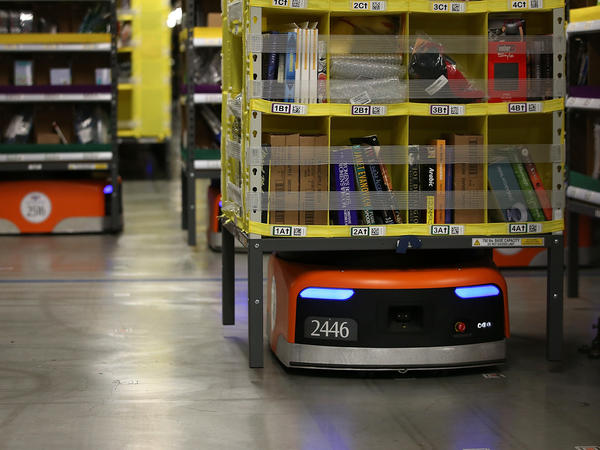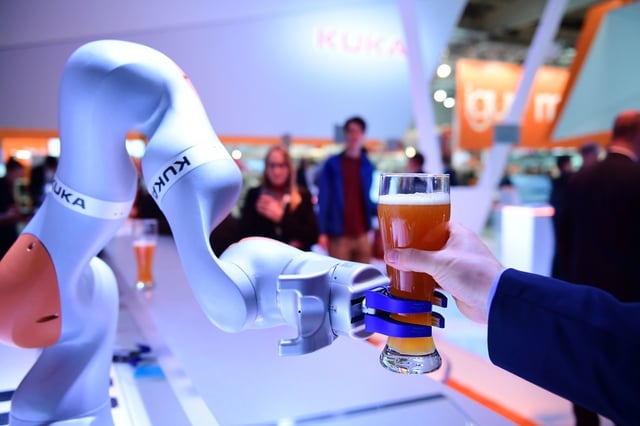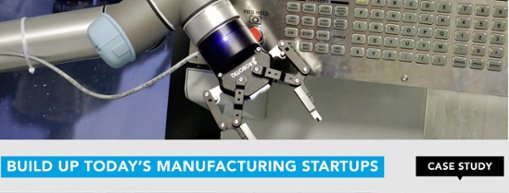What's New In Robotics This Week - Jun 23

Posted on Jun 23, 2017 7:00 AM. 9 min read time
Manufacturing & Cobot Roudup
Let's grab a coffee and get started:
OK. Ready?
This week, Engineer Live examined the UK robotics industry "from uptake of robotics and automation in manufacturing, to those investing in manufacturing this game-changing technology" only to find that the UK is "falling behind":
To remain competitive in the global market, manufacturers should begin to consider making larger investments in industrial robotics.
In fact, a study by Barclays in 2015 suggested an increased investment of £1.24billion could raise the overall value of manufacturing to the UK economy to a colossal £60.5billion in less than decade.
It's a different story in Germany, which is using automation as "a tool for soft power," according to Robotics Business Review.
Hardware Massive took a look at future robot trends in industrial manufacturing:
Meanwhile, Asian Robotics Review asked us to consider the distinction between robot density and "dense robots":
Imagine a factory that could mass produce Smartphones with each and every phone custom built to match the exact needs of each and every customer?
A photographer could order a Smartphone to finely match his or her specific professional and personal needs; a simultaneous translator of Romance languages at the United Nations could do likewise. Anyone could own a Smartphone custom built that would make that person better at what they do for a living as well as afford them a better lifestyle.
And if that Smartphone costs the same or less than a standard Smartphone and could be put together and delivered in a day, would that factory be a goldmine? You bet.
The online retail boom means "more warehouse workers and robots to accompany them," according to Kazu:

Caption: Robots move racks of merchandise at an Amazon fulfillment center in Tracy, Calif. When a robot finds its storage unit, it glides underneath, lifts it up and then delivers it to a worker. JUSTIN SULLIVAN / GETTY IMAGES
There's a good chance something you've bought online has been in the hands of a "picker" first. These are the workers in warehouses who pick, pack and ship all those things we're ordering.
At Amazon and other companies, they're working side by side with robots.
Former Apple executives launched Instrumental, which leverages "machine learning to help electronics companies improve their manufacturing lines, identify and fix problems faster and ship on time. Consisting of camera-equipped inspection stations that are both precise and easy to install, the system empowers companies to remotely manage product lines, maximizing up-time, quality and speed."
All in all, "robots and automation will be good for the long-term vitality of the U.S. economy," according to an OpEd in Supply Chain Mmanagement Review.
Robots are penetrating Tennessee's auto plants, Plant Services took a look at what cobots mean for worker safety, and Boston Consulting Group is predicting that the global market for robotics will reach an incredible USD87bn by 2025.
KUKA Gets Personal
Kuka (the German industrial robot maker that was acquired by Chinese home appliance firm Midea for EUR4.5bn last year), has announced ambitious plans to enter the world of personal assistant bots.

Caption: Via MIT Technology Review
The Financial Times reported on the important influence of cobots in this strategy:
[In] recent years Kuka has already expanded its line-up to include smaller, more mobile “cobots”, or collaborative robots. This includes the iiwa, or intelligent industrial work assistant, which is designed to help workers on delicate assembly tasks.
“We come from this direction to the consumer market; Midea comes from the other direction and we meet in the middle,” Kuka said.
Via Recode:
Right now, most digital assistants for the home don’t leave the tabletop, and are essentially internet-connected speakers with adroit voice-enabled artificial intelligence software, like Amazon’s Echo and Google’s Home.
But Kuka’s expertise in building machines that move on their own, combined with Midea’s deep understanding of home appliances, could be the right combination for making a consumer home robot that’s actually useful.
Going Soft on Robots
A series of bio-inspired, floppy, flexible, soft robots wriggled across my screen this week.
Must be the time of year.
First up, researchers at Seoul National University and Sungkyunkwan University have created what they claim is the world's first "deployable, walking, soft robot."

Caption: DeployBots deploying themselves on a planet for space exploration. Credit: Wang et al. ©2017 Royal Society of Chemistry
Via PhysOrg:
The robot "walks" when an electric current is applied to shape-memory alloy wires embedded in its frame: the current heats the wires, causing the robot's flexible segments to contract and bend. Sequentially controlling the current to various segments in different ways results in different walking gaits.
Mashable has more.
It's not just flexibility that attracts robot designers to soft bots --they aso tend to be low-cost to manufacture, consume less energy than their stiffer peers, and they also tend to be more robust in some specific applications, such as exploring unstructured environments like disaster zones.
Also this week, Norwegian researchers are looking into how a soft, snake-inspired robot might carry out maintenance work on the International Space Station (ISS), study comets, and explore the possibility of living and working in lava tunnels on the Moon.

Harvard Gazette took a peek at some of soft, insect-inspired robots being worked on at the prestigious university.
Researchers at California University are working on a soft spider-inspired bot that featured on the BBC.
The Irish Times got in on the act too, with a piece that examined why bots are "losing their metal."
Soft bots open up exciting possibilities, but perhaps we shouldn't get too carried away, just yet.
According to a piece in Silicon Republic, soft robotics needs "the same breakthrough rigid robots had in the 1980s":
“If you look at robotics science in the 1980s, they were theorising equations on how to plan things like motion and trajectory that was fundamental at the time, but we take for granted today,” Walsh [from Harvard's Biodesign Lab] explained.
He added that rather, at this point in time, it is largely academia working on soft robotics projects that remain almost entirely within the concept phase of development, and are not yet ready to take the next step. This includes developing the manufacturing tech to help scale it and make it low-cost, but also repeatable and robust enough for real-world applications.
I know it's hard to believe (sorry), but I'll be back next week with more news from the world of robotics.
Until then, I hope you enjoy these videos and links!
Snake on a Plane! Don’t Panic: It’s Probably Just a (Soft) Robot (Fortune)
Nuclear decommissioning: sending the robots in (Power Technology)
Neuron transistor behaves like a brain neuron (PhysOrg)
Ethics and potential bias in the law of algorithms (Lexology)
Winsconsin in now the 3rd state to aloow delivery robots (Recode)
Astronauts to get help from snake robots (AlphaGalileo)
How robots and AI are transforming Australian farming (GovInsider)
Indore gets India's first traffic control robot (FirstPost)
What We Need—and Don’t Need—From Government in the Robot Age (Bloomberg)
Piers Morgan explores the future of creepiness by hitting on a robot (AV Club)


Leave a comment